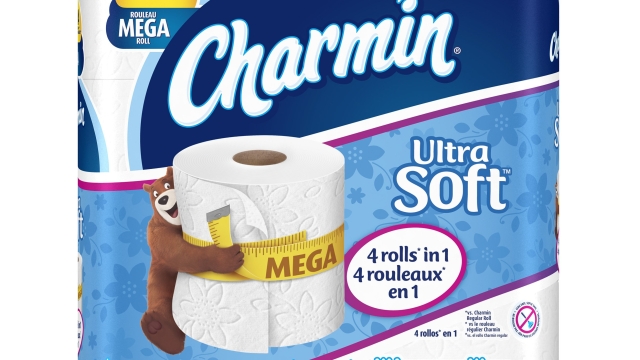The manufacturing process behind one of the most essential household items, toilet paper, is often overlooked. We simply purchase it without giving a second thought to how it is made or the intricate steps involved. However, diving into the world of toilet paper manufacturing reveals a fascinating journey from raw materials to the final roll that we rely on daily. In this guide, we will peel back the layers and explore the untold story behind the roll, shedding light on the intricate process of turning wood pulp into the soft and absorbent product we use every day.
Toilet paper manufacturing begins with the careful selection of raw materials. Trees, typically sourced from sustainable forests, are cut down and transported to paper mills, where they are transformed into wood pulp. The wood is debarked, chipped into small pieces, and cooked in a mixture of chemicals and water to break down the fibers and remove impurities. This process, known as pulping, yields a viscous mixture that will be further refined to create the soft and durable paper we know.
Once the wood pulp is ready, it undergoes a series of refining steps to enhance its quality. During this stage, the pulp is mechanically beaten and treated with various chemicals to separate and align the fibers, creating a smooth and uniform consistency. It is then mixed with water to create a slurry, which is fed onto a continuous moving wire mesh screen. As the water drains, the fibers bond together, forming a wet sheet of paper. This sheet is pressed, dried, and rolled into massive reels, ready for further processing.
From these raw reels, the manufacturing process takes a decisive turn, transforming the large sheets into the familiar rolls we are accustomed to. The reels are unwound, and the paper is slit into narrower strips, which will become individual toilet paper rolls. These strips are then embossed, perforated, and rewound onto cardboard cores. At this stage, additional layers may be added for thickness and softness, enhancing the comfort and absorbency of the final product.
As the rolls are complete, they undergo rigorous quality control checks, ensuring that each one meets the desired standards for strength, softness, and perforation. Once approved, the rolls are packaged, ready to be shipped out to stores and homes worldwide.
Understanding the intricate process behind toilet paper manufacturing allows us to appreciate the countless steps involved before a roll makes its way into our hands. From the selection of raw materials to the refining and conversion processes, every detail is carefully orchestrated to deliver a product that plays a vital role in our daily lives. So the next time you reach for a roll of toilet paper, take a moment to appreciate the untold story that lies behind it, knowing that it went through a journey of transformation to become the essential item we all rely on.
History of Toilet Paper
Bulk Napkins Paper

Toilet paper, an essential commodity in our daily lives, has a fascinating history that dates back centuries. Let’s take a closer look at how this humble product evolved over time.
The origins of toilet paper can be traced back to ancient China, where it was first used by the imperial court during the 6th century. These early versions of toilet paper were not the soft and comfortable rolls we are accustomed to today, but rather thin sheets made from materials such as bamboo and mulberry bark.
In the 14th century, the Ming Dynasty took toilet paper production to another level by manufacturing it on a large scale. During this time, the Chinese government even employed a specialized team of craftsmen known as the "paper perfumers" to create scented toilet paper for the royal family.
Toilet paper slowly spread to other parts of the world over the following centuries. In the 16th century, for example, wealthy Europeans began using toilet paper made from hemp or cotton. However, it was not until the 19th century that commercially-produced toilet paper became widely available, thanks to the invention of the paper machine.
This invention revolutionized paper manufacturing, allowing toilet paper to be mass-produced and significantly reducing its cost. Soon, this convenient hygiene product found its way into households across the globe, becoming an essential part of modern sanitation practices.
Toilet Paper Manufacturing Process
Toilet paper manufacturing is a fascinating and intricate process that transforms raw materials into the soft and essential product we all use on a daily basis. Let’s take a closer look at how this popular household item is made.
The process of toilet paper manufacturing begins with the selection of high-quality paper fibers. These fibers, usually obtained from wood pulp or recycled paper, undergo a meticulous refining and cleaning process to remove any impurities or contaminants. Once the fibers are clean and pure, they are mixed with water to form a pulp.
Next, the pulp is fed into a machine called a paper machine. This machine consists of a long moving belt made of a fine mesh screen, on which the pulp is spread evenly. As the belt moves, water is drained away through the mesh, leaving behind a thin sheet of wet paper.
The wet paper then goes through a series of pressing and drying stages to remove most of the remaining moisture. It passes through a series of large heated metal rollers that squeeze out water and make the paper smoother and more compact. Lastly, the now-dry paper is wound onto jumbo rolls, which can weigh several tons and are later used to produce the smaller rolls of toilet paper that we are familiar with.
That concludes our overview of the toilet paper manufacturing process. Stay tuned for the next section, where we will explore the various types of toilet paper and the different factors that contribute to its softness and strength.
Environmental Impact and Sustainability
Toilet paper manufacturing has a significant environmental impact that has come under scrutiny in recent years. The production process involves the cutting down of trees, which contributes to deforestation and habitat destruction. Additionally, the manufacturing of toilet paper requires large amounts of water and energy, further straining our natural resources.
However, there are steps being taken to address these environmental concerns and promote sustainability within the industry. Many manufacturers are implementing more sustainable practices, such as using recycled materials for the production of toilet paper. By utilizing recycled fibers, less demand is placed on virgin wood pulp, reducing the need for deforestation.
Furthermore, efforts are being made to improve the manufacturing process itself. Technologies are being developed to make toilet paper production more efficient, minimizing water and energy consumption. Additionally, some companies are exploring alternative fibers like bamboo and hemp, which have a higher growth rate and require less water and resources to cultivate.
In conclusion, while the production of toilet paper does have an environmental impact, steps are being taken to mitigate this impact and promote sustainability within the industry. By using recycled materials, implementing more efficient production processes, and exploring alternative fibers, the toilet paper manufacturing industry is striving to become more environmentally friendly.





